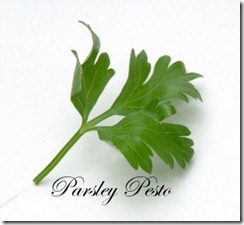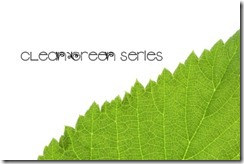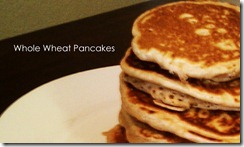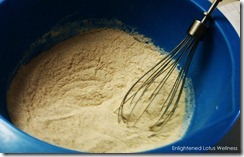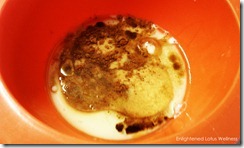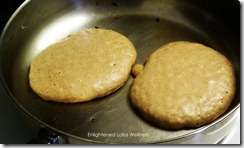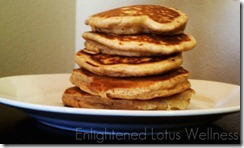 |
| Communications between the brain and the body through sensory cells (Photo credit: Wikipedia) |
As a parent, you hope for happy, healthy kids that grow into happy, healthy, and well-adjusted adults. When your little bundles of joy are still in infancy it is often hard to diagnose problems if they do not manifest physically. As was the case with my oldest son Jacob, it wasn't until around his 3rd birthday that I started to become concerned, until then his
motor skills were fine, he could run and jump and play, but his lack of verbal communication could no longer be dismissed in my mind as just being somewhat slower to develop these skills in relation to other children. When I expressed concern at the doctor, she set him up an appointment with the
speech pathologist and told me I needed to take him to the psychologist? ! ? I was confused, I understood the reasoning behind the speech pathologist but a psychologist for a 3-year-old? Really?
He started with the speech pathologist shortly after and she referred him to the Colorado Child Find Program for further testing. It was at this appointment that I found out the speech pathologist was really referring him to be tested for autism, while this was the first I had heard of this concern, the team at Child Find did not think autism was a concern but that he had sensory processing integration issues. It was also at this appointment that I was urged to go ahead and get Jeremiah tested as well.
Sensory integration dysfunction (aka sensory integration disorder or
sensory processing disorder) is the diagnosis I received to explain the speech delays my sons were experiencing. I had never heard of this disorder so I researched as much information I could find about the causes, the treatments and theories behind them. Sensory integration is a process that most of us take for granted, but for those that experience dysfunction in this area, symptoms can manifest in a variety of unusual behaviors. Processing
sensory information happens on four levels and when the brain has problems processing this information it is described to be like a traffic jam in the brain. What causes sensory integration dysfunction? What determines normal processing from dysfunction? What are the signs and types of sensory processing issues? How is this dysfunction treated and how positive are the results? Are there any other factors that can influence sensory processing disorders? What can I do? After the diagnosis that both of my sons had issues with sensory integration I needed answers to these questions.
Sensory Integration (SI) is the neurological process that organizes sensation from one’s own body and the environment. The theory of sensory integration predicts that when an infant is able to successfully meet the challenges of his or her environment, there is an increase in his brain’s ability to organize sensations for production of increasingly adaptive response. (Paul, et al., 2003). Sensory information is processed at four levels; the first is registration, which is the detection of stimuli from the body or environment. Modulation is the second level which deals with the ability to match arousal, attention and activity level to the demands of the environment without being distracted by irrelevant sensory input. The third level is discrimination or the identification of the temporal and spatial characteristics of sensory information and recognition of their meaning as in stereo gnosis. Praxis is the final level; it deals with developing and carrying out a motor plan for interaction with the environment. (Miller, 2005).
Children that are affected by sensory integration problems often have been institutionalized, physically deprived in some way, or exposed to prenatal toxins (alcohol, drugs, and nicotine). If the quality or lack of prenatal care results in prematurity, low birth weight, or birth complications, processing issues may result. Prenatal stress impairs sensory processing via altered regulation of stress hormones. Heredity factors may also contribute to sensory integration disorders. Normal sensory function depends on receipt of normal sensory inputs during infancy. (Miller, 2005).
Sensory integration dysfunction may manifest itself in varying degrees, depending on the child. If a child displays behaviors such as withdrawing when touched, avoiding certain textures or having to wear certain clothes they may be sensory defensive. Other signs of sensory defensiveness could be a fearful reaction to ordinary movement activities such as playground play, sensitivity to loud noises or distractibility. Seeking out intense sensory experiences such as body whirling, falling, and crashing into objects, or appearing oblivious to pain or to
body position could signal the child being under-reactive to
sensory stimuli. Coordination problems are another sign of sensory integration issues, this may manifest in poor balance and difficulty learning new motor tasks. Sensory integration problems may lead to delays in pre-academic achievement or activities of daily living, such as, handwriting, scissor use, or buttoning and zipping clothes despite normal or above normal intelligence. The final area signs of sensory integration may be observed is in poor organization of behavior. The signs of poor organization of behavior are, impulsiveness, distractibility, an inability to anticipate results of ones actions, difficulty adjusting to a new situation or following directions, difficulty with transitions, frustration, aggressiveness or withdrawing. (Miller, 2005).
There are six types of sensory defensiveness.
Tactile defensiveness results in a dislike to light touch, crowds as well as getting a haircut or washing the hair. Oral defensiveness is when certain textures of food are avoided and tooth brushing is often disliked. Gravitational insecurity is when there is a fear of changes in position such as moving the head backward or washing hair in the tub. Auditory defensiveness is sensitivity to loud noises especially high pitched ones. Over-sensitivity to light and gaze avoidance are signs of visual defensiveness. Hypersensitivity to smells has been termed olfactory defensiveness. (Miller, 2005).
Sensory Integration Theory was first introduced by Jane Ayers. This theory is based on the assumption that there is plasticity within the central nervous system and through the provision of controlled tactile, vestibular and proprioception sensory inputs, the ability of the brain can be modified. This sensory integrative process occurs in a developmental sequence since the
brain functions as an integrated whole, but is comprised of systems that are hierarchically organized. Higher level brain functions evolved from and are dependent upon the lower level sensorimotor experience. Evincing an adaptive behavior promotes sensory integration. An adaptive behavior is defined as, “one that is purposeful and goal directed and it enables the individual to successfully meet the challenge and learn something new.” Ayers also ascertained that humans have an inner drive to develop sensory integration through participation in sensorimotor activities. ( Paul, et. al., 2003).
The role of the occupational therapist (
OT) while working with children with
sensory integrative dysfunction is to promote the child’s full participation in the occupations and activities of everyday living. The OT has a variety of approaches and techniques at their disposal and the chosen approach depends on the perspective of the occupational therapist regarding the nature of the problems experienced by the child and how to address such problems. Impairment oriented approaches focus on body functioning and structure to improve activity and participation of the child. This approach is based on the assumption that competent occupational performance depends on properly functioning nervous and
musculoskeletal systems and that damage or abnormal development of one or more of these systems results in dysfunction. Impairment oriented approaches aim to reduce impairment and restore function through targeting the impaired body structure and function. Sensory based approaches are those described as providing specific sensory stimulation such as using a weighted vest or sound therapy. This approach assumes targeted sensory input will lead to the remediation of impaired sensory processes. Sensorimotor approaches provide a variety of motor activities with an inherent variety of sensory stimuli and are based on the assumption that the motor system cannot operate optimally without processing and integrating sensory information and that the coordination of sensory and motor information is essential to motor performance. Performance oriented approaches focus on performance to improve activity and participation, not being directly concerned with the underlying impairment in body structure or function, but rather the focus on the performance directly often relying on systems theories to understand the reasons for the observed activity limitations and participation restrictions. The aim of direct skills teaching approaches is to teach specific skills, such as throwing a ball; such approaches make use of teaching, coaching and
motor learning principles to enable the child to acquire set skills. Cognitive based approaches aim to teach children to use strategies that enable their learning of chosen activities. In a consultation model, the therapist does not provide intervention directly, but spends most of the time discussing the child’s needs with a parent or teacher, determining and designing intervention, trading others to implement intervention, and monitoring both the implementation of the intervention and the child’s outcomes. For children with typical levels of intelligence, the performance based approaches may hold the most promise. (Polatajko & Cantin, 2010).
According to Ayers, the increase in environmental toxins, such as air contaminates, and other chemicals may combine with hereditary factors in some children, thus contributing into dysfunction. (Becker, 1982). Children’s risk of toxic chemical exposure exceeds that of adults because of children’s physiological and behavioral characteristics. In relation to adults, infants and small children have higher food, fluid and air intake per kilogram of weight; developing and immature organ systems; higher metabolic rates; and behaviors conducive to increased chemical exposure. (Graff et. al., 2006). A known neurotoxin, mercury, can be found in amalgam fillings, food, interior latex paint and some vaccine preservatives. It influences mental and neurological processes even at levels as low as 35mug g
-1creatinine. (Thilo-Korner, 2000). The National Academy of sciences (NAS) estimates that 25% of developmental and neurological deficits in children are due to the interplay between chemicals and genetic factors and that 3% are caused by exposure to chemicals alone. (LeBeau & Gagnon, 2006).
Sensory integration dysfunction is still a controversial field with some in the medical community continuing to question its validity. In my opinion, there is no doubt that sensory integration dysfunction is very real. The diagnosis of my sons is still fairly new and I am still experimenting with what approaches yield the best results but it is reassuring to know there is an explanation behind some of their unusual behavior. Research into this field is still rather limited so I may have to approach many solutions by trial and error. My focus now is limiting their exposure to as many chemicals as possible both in their diets as well as in their home environment. I hope in the future research is expanded to include what nutritional interventions may be indicated. I do have them on an all organic diet and I am thrilled with the results.
I hope by sharing my story, I bring awareness to this condition. Jacob is now 4 and getting ready to start pre-school, he has made great strides since his diagnosis and we can now have a conversation, which is pretty awesome. Jeremiah, now 2, does not have the processing issues to the severity that Jacob does and is in weekly therapy, he is starting to get clearer in his speech. While they have both been diagnosed with the same disorder, it has manifested very differently in them. Jacob hates clothes and prefers to run around in his diaper (no he is not potty trained yet :( despite all my efforts) while Jeremiah dislikes to be without clothes. Parenting is not easy and we all have to work within the situation and skill sets we have been given, so next time you see a parent struggling, instead of judging, lend a hand. You never really know what someone is dealing with, being helpful is always better than being hurtful.

- Jacob & Jeremiah 2012
References
Becker, M.S. (1982). Level of sensory integrative functioning in children of Vietnam veterans exposed to Agent Orange.
OTJR, 2(4), 234-244.
http://search.proquest.com/docview/907243573?accountid=35996
LeBeau, K., & Gagnon, M. (2006). Chemicals & developmental disabilities- get the mercury and pesticides out of your diet.
Exceptional Parent.36 (2), 60-62.
Miller, L. (2005).
The Handbook of International Adoption Medicine: A Guide for Physicians, Parents & Providers.Oxford University Press, Inc. New York, NY.
Paul, S., Sinen, P., Johnson, J., Latshaw, C., Newton, J., Nelson, A., & Powers, R. (2003). The effects of a sensory motor activities protocol based on the theory of sensory integration on children diagnosed with preprimary impairments.
Occupational Theory in Health Care,17(2), 19-34
Polatajko, H.J., & Cantin, N. (2010). Exploring the effectiveness of occupational therapy interventions, other than the sensory integration approach, with children and adolescents experiencing difficulty processing & integrating sensory information.
The American Journal of Occupational Therapy,64(3), 415-29.
http://search.proquest.com/docview/503270117?accountid=35996.
Thilo-Korner, D.H.(2000). Environmental infection & Heavy metal analysis in more than 400 patients. Part 1: Metal analysis of Aluminum, Lead, Selenium, Zinc.
Journal of Nutritional & Environmental Medicine, 10(2), 133-143.


